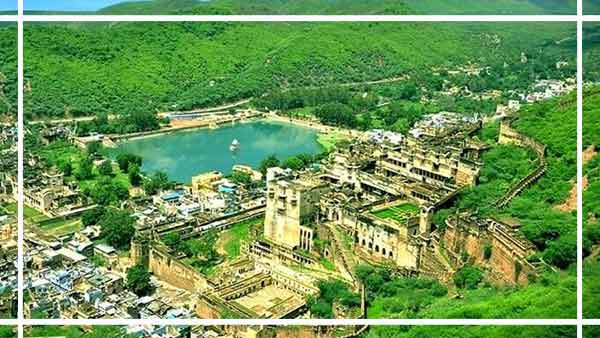Bundi Destination During the heyday of the Rajputs Bundi was the capital of a large princely state. History has it that the Mina and Bhil tribes formerly inhabited the area around Bundi Destination. And that’s the reason the area was named after Bunda Meena, a prominent Mina Guy. Bundi was originally known as “Bunda-Ka-Nal,” which means narrow passage between the rugged hills. Prince Jait Singh captured Kota in 1264 and became Bundi ‘s son. In 1342 Jaita Meena took over the region, establishing a princely state, Bundi Destination, and renaming the surrounding area, Hadoti.
Bundi ‘s citizens started to display their allegiance to Mughal from the late 16th century onwards, but it retained its existence until after 1947 it was absorbed into the state of Rajasthan. Colossal in size and enormous in beauty, Bundi is a captivating town, surrounded at every turn by Aravalli ranges, lined with Brahmin-blue houses, lakes, hills, bazaars and a temple. Many forts dominate Bundi’s landscapes, and the greatest among them all is the Taragarh Fort, the best place to witness Rajputs’ grand legacy. The Bundi Fort is located in the small valley of Bundi, opposite the Taragarh Fort. It has huge walls which outline the hills’ crest. While enjoying the Bundi Fort cityscape, one would notice miles of meadows till the haze purple hills, and their showdown in the Jait-SagarLake.
Jai Sagar Lake, a 4-kilometer long lake, is aptly named after the Sukh-Mahal which teeters on its edge. Having seen so much greenery, lakes, scattered buildings of Rajput architecture and vibrant architectures of Rajasthani, it is hard to believe that the fiery the desert is right next door. Chaurasi1-Khambon-ki-Chatri, an 84-pillar cenotaph, is another rarest contribution by royal families. This sightseeing place was built in 1683 by Rao Raja Anirudh, the Maharaja of Bundi Destination, in memory of his mother, Deva, under whose love and guidance the prince grew up. Courtsey Bundi Tourism, the place is well kept and a strong crowd gathers. Consider Bundi and the first image that hits the mind is Bundi Paintings, a theme of 17th-century Rajasthani paintings. Bundi people take their festival festivities too seriously. They celebrate their festival with great pomp and display in order to preserve their cultures and traditions, particularly the Kajali Teej and Gangaur Festival. To see the city at its finest, schedule the Bundi tour around these festival celebrations. This city fascinates every tourist right from the miniature paintings to 46 m long steep walls. Bundi resembles an undiscovered green emerald in the Aravalli hill fold. If a trip to Bundi is on the cards then Bundi travel guide can be the passport for the most important, up-to – date advice on what to see and miss, and secret discoveries awaiting tourists Bundi Destination.
Major Attractions in Bundi – Bundi Destination
Taragarh Fort
The Taragarh Fort is among Bundi’s most impressive buildings. Rao Deva created the state of Bundi this year, and this was when this large square began to be constructed. The attraction, popularly known as the ‘Star Fort,’ is situated on a steep hill and offers a panoramic and spectacular view of the entire city of Bundi Destination situated in the Aravalli Nagpahari district. The fort was described as “more the work of Goblins than of men” by the famous author Rudyard Kipling Sadly time has taken its toll on this beautiful building, and much of the Fort ‘s elegant and fascinating architecture is now in ruins Bundi Destination.
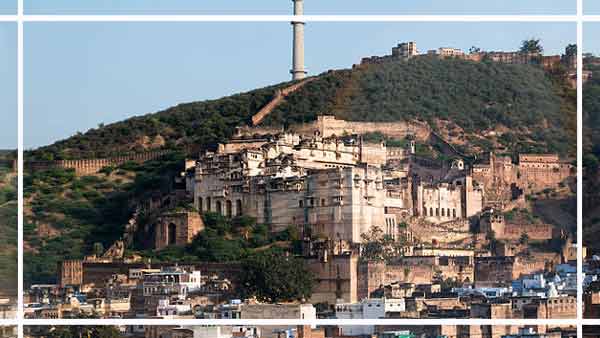
The entrance to the fort is marked by three gateways, along with ramparts, followed by tunnels and many battlements. These exhibits, like the famous Grand Canyon or the ‘Garbha Gunjan,’ are also of great interest to tourists. The Rani Mahal, which was built exclusively for the rulers’ wives and concubines of those times, and is located in the same area, is also a great and famous tourist attraction. When the sun sets, the town is at its height of beauty and the entire city is lost in the fading light of the setting sun. A visit to the Taragarh Fort is an engrossing experience including important knowledge of our rich history and culture.
Architecture of Taragrah Fort
A giant gateway welcomes you to Fort Taragarh. The entrance to the fort has three distinct gateways. The names of those portals are Lakshmi Pol, Phuta Darwaza and Gagudi ki Phatak. The gates are embossed with elephant carvings. The tunnels in the fort are worth a visit, too. It would be interesting to know that the tunnels in this mighty fortress played an important role during wartime as it provided a secure exit for the king and his deputies in emergencies or imminent dangers. Tourists are sadly not permitted to access the tunnel, as there are no detailed tunnel maps available.
Other than this, a multitude of large battlements and ramparts are also home to the magnificent castle. The largest of these is the bastion of the 16th century, known as Bhim Burj, on which once was installed the giant cannon Garbh Gunjan or the ‘thunder from the womb.’ The Chauhan bastion also has some major water reservoirs which were built in times of crisis to store water and supply it to the residents. Those reservoirs were constructed from the fort’s rocky foundation Bundi Destination.
The Rani Mahal is also a top-rated tourist attraction at the Taragarh fort. The palace boasts stained glass windows and murals, which are now decorated with bygone period charm. It also houses its complex, the popular Miran Saheb ki Dargah. The Taragarh Fort provides a great view of the entire town and is perfect for bird watching, making it popular among visitors.
Moti Mahal, Bundi
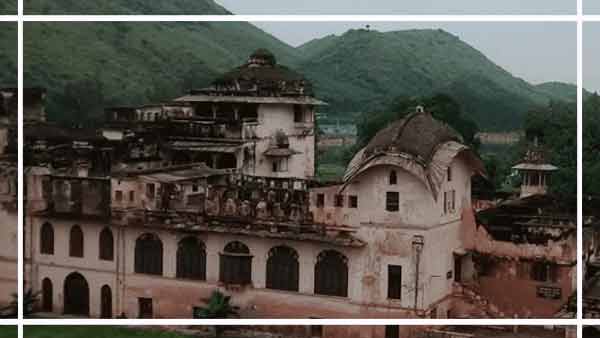
Bundi is a small town in Rajasthan’s Hadoti district, located 250 km from Rajasthan’s capital city and 39 km from Kota. The region is known for its picturesque forts, steep-wells, palaces, lakes , and reservoirs. Moti Mahal is one of the city’s unparalleled attractions. Along with the Moti Mahal Palace ‘s historic elegance, you can also enjoy the panoramic view of the arid Aravali hills in the backdrop and the view of the ancient Nagal Sagar Lake.
Maharao Raja Bhao Singh Ji built the magnificent Fort in the year 1645. The fort was taken over by Rao Raja Chatrasal and then by Rao Raja Umed Singh in the later years of the 16th and 17th century respectively. The fort was further fortified and expanded by the two kings who constructed separate steep wells and attached small structures to the fort. Ajit Singh, who built a beautiful garden along the lake and a huge Shiv temple near the fort, captured the fort later in the 19th century Bundi Destination.
Badal Mahal, Bundi
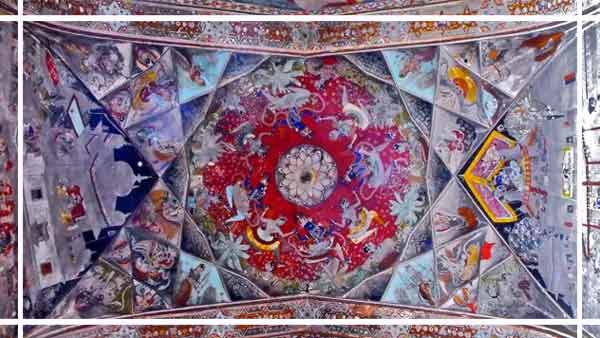
The Badal Mahal is situated inside the Taragarh Fort grounds. This grand castle’s dividers are secured with stunning canvases. Such artistic works are interesting because they represent an influence of Chinese culture. Badal Mahal stands out as a royal mist residence on the side of Gaibsagar Built inside the Kumbhalgarh Fort; Badal Mahal ‘s novel plan is celebrated around the globe. Royal Residence was employed in two separate periods of time. Verandah and ground floor developed in the starting stage by Maharawal Gopinath. In the second stage, Marahawal Punjraj built verandah in front of the ground floor, first floor and arch by 1609-1657AD, irrespective of having some redesigns in the underlying stage growth. Badal Mahal is built on stone from Dawra. There are one half ready lotus on each of the three arches, and three half ready lotus on Badal Mahal ‘s longest vault, which makes this castle a permanent delight. The Mahal gives an extraordinarily elevated view of the fortification inside and outside Bundi Destination.
Garh Palace
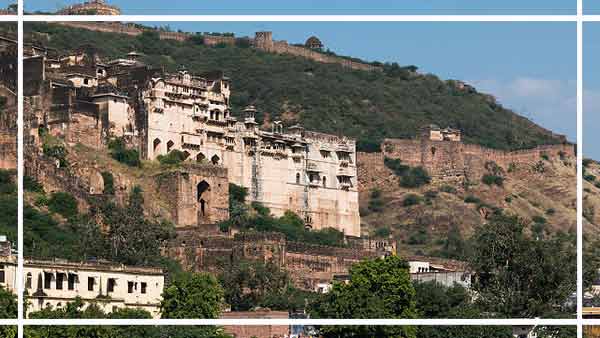
Garh Palace, one of Rajasthan ‘s best palaces, is known by locals as Bundi Palace. Garh Palace in Bundi, a magnificent building, is a fine example of Rajput architecture which houses some of the beautiful frescoes of Bundi. This massive Palace was built between 1607 AD and 1631 AD by Raja Rao Ratan Singh Hada. Located (located) near Fort Taragarh, When viewed from the top Garh Palace resembles a gripping structure. Garh Palace houses miniature paintings of the best painting school in India-” Bundi School of Painting “The Bundi Palace is easily identifiable by the elephants installed at its entrance. In the vicinity of the palace there is a” Phool Mahal “and” Badal Mahal. Good wall paintings can be seen, including a beautiful Chinese inspired ceiling, divided into petal shapes and decorated with peacocks etc. Bundi’s Garh Palace is regarded as one of the finest examples of Rajput architecture. The imposing, albeit decrepit, building overlooking the city currently houses three palaces constructed during the 17th & 18th centuries. A visit to Palace Bundi is worth the time, money and effort. One enters the Bundi Garh Palace into Ratan Daulat through a gigantic doorway, being flanked on either side by stone-built elephants. Ratan Daulat was designed by Ratan Singh Maharao. Ratan Daulat is a very interesting structure which forms a nine horses stable and a Hathiya Pol. Upstairs the courtyard is dominated by a magnificent, white marble throne. Then we go to Mahal Chatra designed by Chhatrasal Singh Maharao. It has beautiful murals in green, blue , and yellow tones of turquoise. Remember that each pillar rests in the Hathiya Pol on four elephants and the wooden doors are ivory-inlaid. While visiting Garh Palace, Rudyard Kipling said that it seemed to be constructed more by goblins than people. The bad state of preservation gives it a romantic and decadent look Bundi Destination.
Chaurasi Khambon ki Chattri
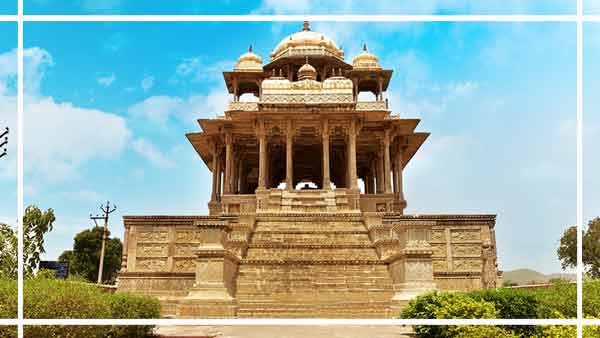
Chaurasi Khambon ki Chattri This one is a treat to you for someone who is passionate about historical sites and structures. It is a marquee that has 84 pillars to support. Rao Anirudh Singh designed the marquee in 1683 to honor the services of Deva, who was a nurse.
This building sits on a high pinnacle and has two stories, respectively serving as a memorial and a place of worship. This patio’s second floor is centered on a flat roof framework with a wide round curved roof in the middle surrounded on each cornice of the roof by four small domes. The base is adorned with animal engravings, and the pillars have striking pictures of life style in the 17th century Rajput regime Bundi Destination.
Nawal Sagar Lake
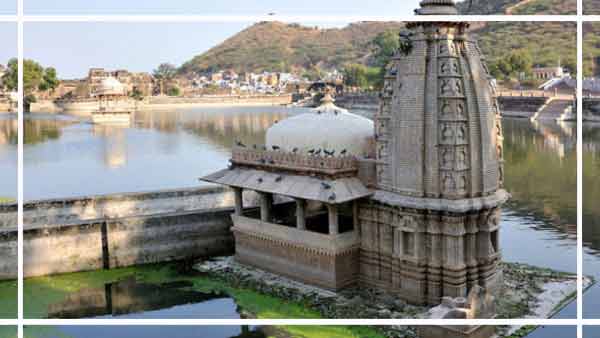
Lake Nawal Sagar is one of Bundi’s most important tourist attractions. This lake is surrounded in all its sides by various baoris. At the middle of this lake there is a temple of Lord Varuna, i.e. the Aryan God of Water, which attracts a large number of worshippers. The temple is partially underwater, and there is a boat service to help the followers enter the temple.
The best aspect of the lake which attracts tourists in the first place is that it represents a mirror image of the forts and palaces in its water. It was built in order to provide water for the different step wells in Bundi to deal with water scarcity. The Nawal Sagar lake can best be seen from above the Taragarh Fort, or from the road next to the lake. The lake looks stunning at night when adorned with lights, and falls into the water with incredible reflection. A daytime lake visit can be comfortable, as you can enjoy the cool weather Bundi Destination.
Taragarh Fort
Also known as the Star Fort, the Taragarh Fort is located on a hilltop, and is Bundi’s main attraction. Completed in 1354, it still manages to confuse every visitor. Taragarh Fort is one of Rajasthan ‘s best forts and is called by people the finest example of Rajput architecture. The fort is huge, and a few secret tunnels are still unmapped in here. The layout and the lighting make it a masterpiece, all add up. Even the walls here are graved with very artistic paintings. Yes, Bundi style of mural paintings is believed to have originated from this fort itself Bundi Destination.
Raniji Ki Baori
Raniji ki Baori is a well known move by Bundi built in 1699. It had been designed by Rao Raja Anirudh Singh ‘s youngest wife, Rani Nathavati. This well goes into the ground 46 m deep and has a narrow entrance. The Baori pillars have tender, detailed carvings. The building has multi-story building and every store has a worship sculpture. Rajasthan has a variety of baoris but the most famous of all is this particular move well.

